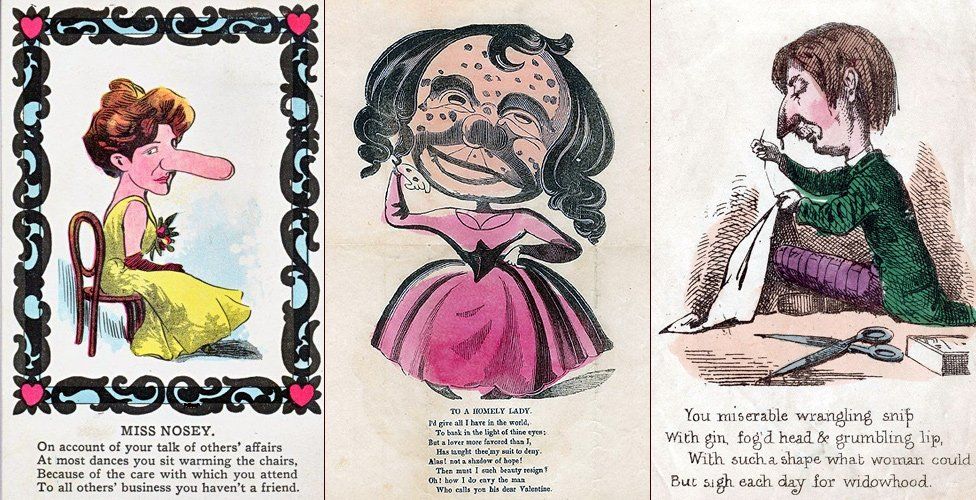
Valentine’s Day is typically associated with flowers, chocolates, and declarations of love. But what about the sour side of this holiday? Enter Vinegar Valentines – the sassy, sarcastic, and often cruel greeting cards that were all the rage from the mid-19th to early 20th century.
Before Hallmark and candy companies took over the holiday, people used to express their love, or lack thereof, through handwritten letters and homemade cards. This is where Vinegar Valentines came in – they were the ultimate tool for rejection, social commentary, and dark humour. And, let’s be honest, they were pretty funny.
So, what exactly were Vinegar Valentines? These cards were filled with biting messages meant to mock, ridicule, or reject someone. Unlike traditional Valentines, which were often sweet and sentimental, Vinegar Valentines were sharp, sarcastic, and often hurtful. The name “Vinegar Valentines” was derived from the sour, bitter taste of the messages contained within the cards.
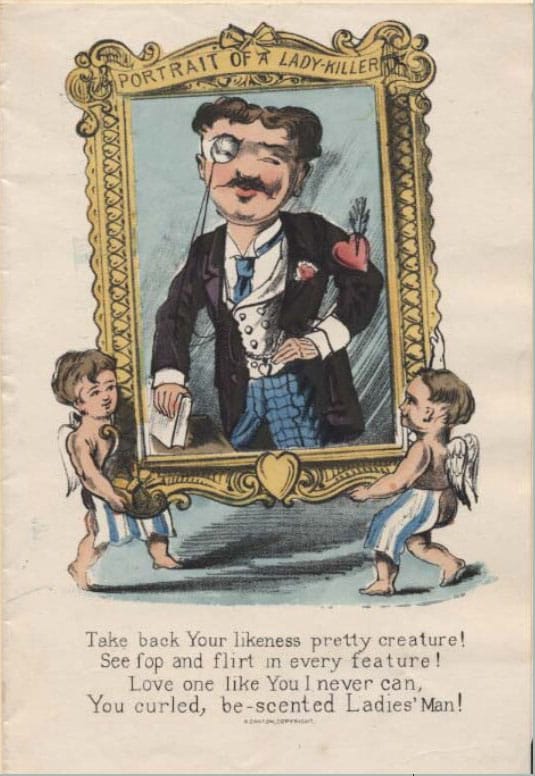 One of the most interesting aspects of Vinegar Valentines was their design. They were usually printed in bright colours and decorated with intricate illustrations, making them visually appealing despite their unpleasant messages. The images on these cards were often humorous, with exaggerated depictions of the subjects being mocked.
One of the most interesting aspects of Vinegar Valentines was their design. They were usually printed in bright colours and decorated with intricate illustrations, making them visually appealing despite their unpleasant messages. The images on these cards were often humorous, with exaggerated depictions of the subjects being mocked.
They were extremely popular, with some estimates indicating that about half of the valentines sent were mean ones – which doesn’t include the ones that the post office confiscated because they were decided to be too vulgar.
To add insult to injury, you often had to pay to read them.
For a very long time, it was common for the letter’s recipient rather than the sender to pay the postage. Receiving a vinegar valentine would be a bit like having to pay one cent to read a rude tweet from a troll.
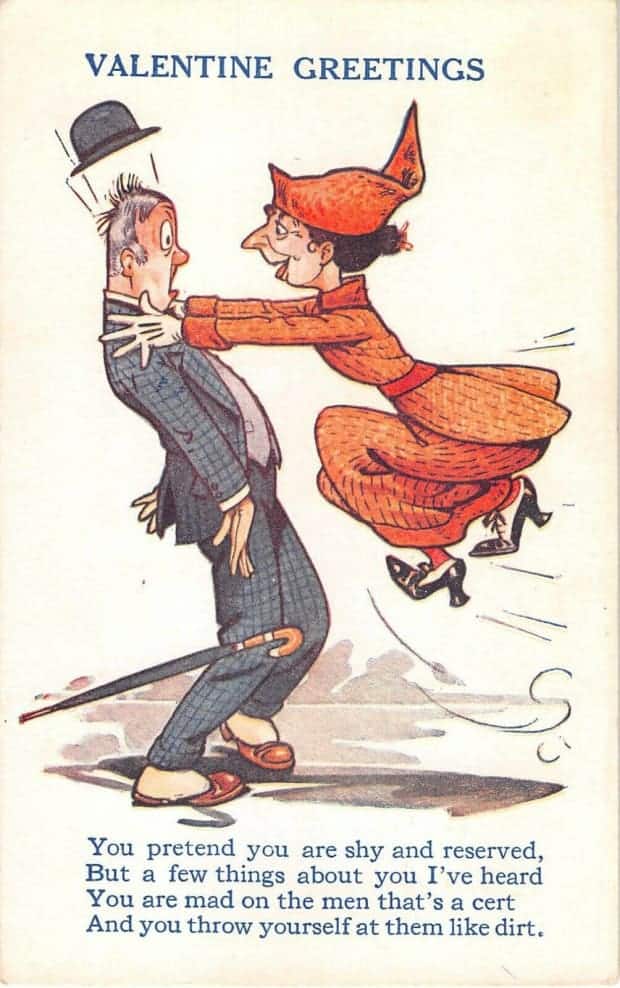
In 1840, adhesive postage stamps were issued for the first time, which flipped who paid the postage, putting the onus on the sender. The cost of a piece of mail now depended on how much it weighed and, more importantly, meant that mail could be sent anonymously.
A regular Valentine’s card was generally printed on fancier cardstock and typically folded down the middle making it thicker and heavier. Vinegar Valentines were printed like postcards, but on very flimsy quality paper so they were comparatively very light. This meant that they were less expensive to purchase and to send than a real, romantic valentine. It was literally cheaper to be mean than it was to be nice!
As Vinegar Valentines could be sent anonymously, were inexpensive to purchase, cheap to send, and allowed you to say something mean without facing any consequences – they were extremely popular!
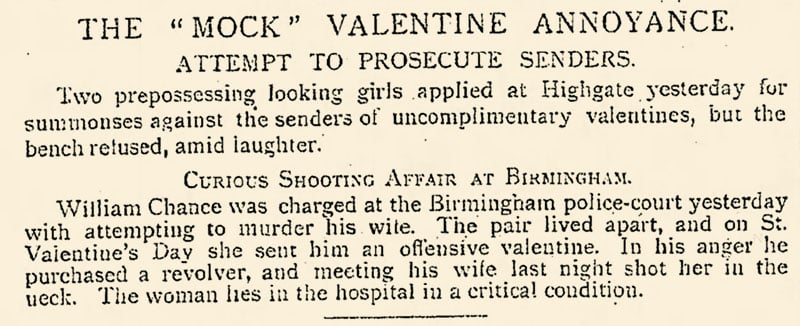
Pall Mall Gazette, 19 Feb 1895
Well, they were popular to send, but not to receive. There are stories of fights and court cases between supposed senders and recipients of vinegar valentines, and in 1885 the Pall Mall Gazette published a story of a man who shot his estranged wife after receiving a vinegar valentine that he said was sent by her. Most of the time, people ripped up or burned their vinegar valentines.
Valentine’s Day might not rank as anyone’s favourite holiday, but at least we don’t have to worry about paying to be roasted by post.
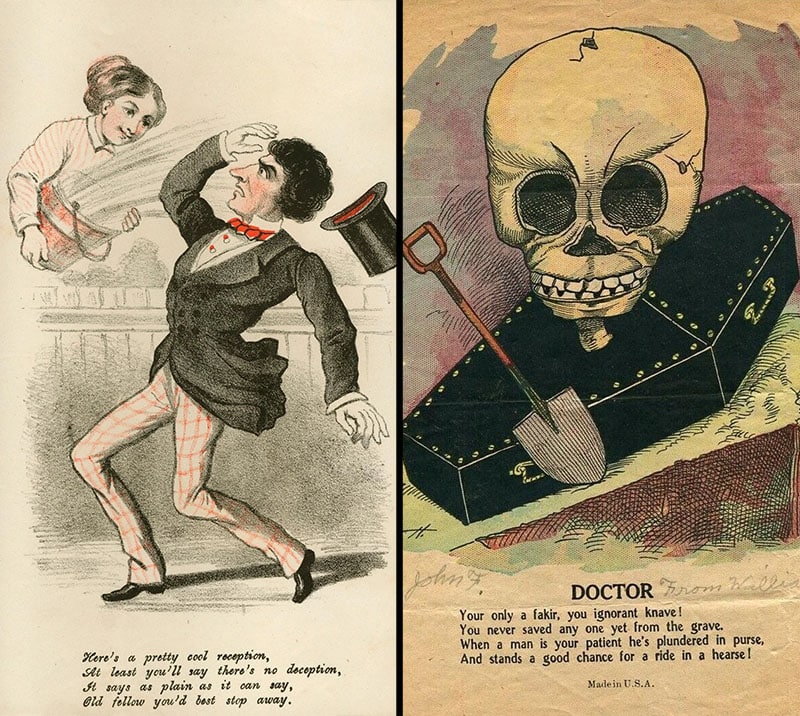
Ghost Tours & Paranormal Adventures
Sources:
https://crimereads.com/when-valentines-were-vicious-a-brief-history-of-the-vinegar-valentine/
https://www.history.com/news/victorian-valentines-day-cards-vinegar
https://www.smithsonianmag.com/history/nothing-says-i-hate-you-vinegar-valentine-180962109/
https://www.atlasobscura.com/articles/vinegar-valentines-victorian
https://www.bbc.com/news/uk-england-31320958 (header image)
https://zoecashman.journoportfolio.com/articles/victorian-vinegar-valentines/
